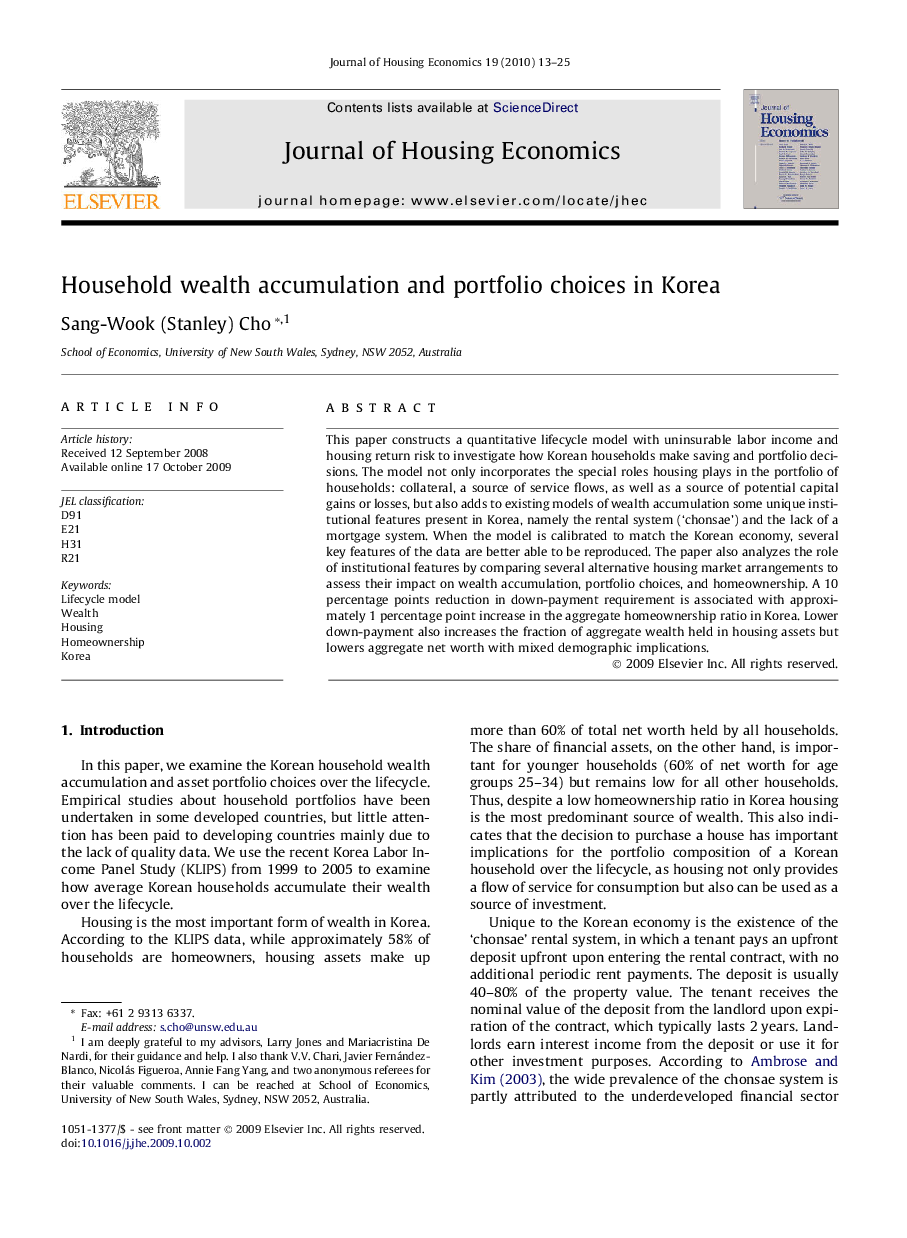| Article ID | Journal | Published Year | Pages | File Type |
|---|---|---|---|---|
| 962287 | Journal of Housing Economics | 2010 | 13 Pages |
Abstract
This paper constructs a quantitative lifecycle model with uninsurable labor income and housing return risk to investigate how Korean households make saving and portfolio decisions. The model not only incorporates the special roles housing plays in the portfolio of households: collateral, a source of service flows, as well as a source of potential capital gains or losses, but also adds to existing models of wealth accumulation some unique institutional features present in Korea, namely the rental system ('chonsae') and the lack of a mortgage system. When the model is calibrated to match the Korean economy, several key features of the data are better able to be reproduced. The paper also analyzes the role of institutional features by comparing several alternative housing market arrangements to assess their impact on wealth accumulation, portfolio choices, and homeownership. A 10 percentage points reduction in down-payment requirement is associated with approximately 1 percentage point increase in the aggregate homeownership ratio in Korea. Lower down-payment also increases the fraction of aggregate wealth held in housing assets but lowers aggregate net worth with mixed demographic implications.
Related Topics
Social Sciences and Humanities
Economics, Econometrics and Finance
Economics and Econometrics
Authors
Sang-Wook (Stanley) Cho,
